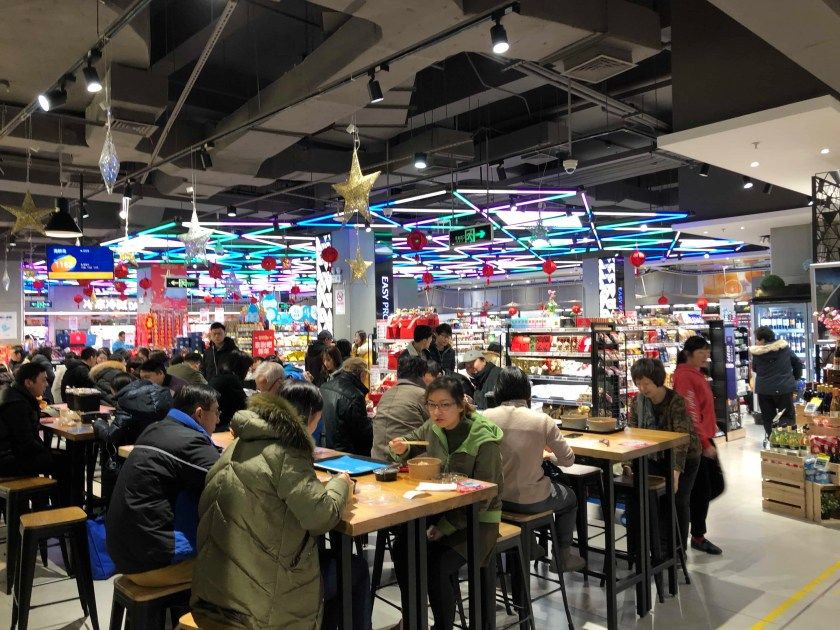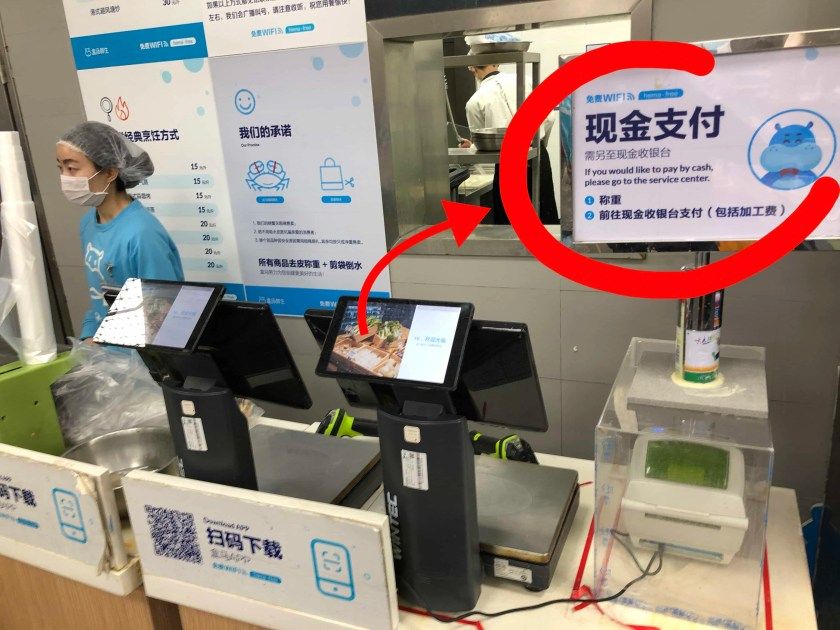Hema Market, the Full ‘Digital is Over’ Experience

Since 2016 (a bit more actually), I’ve been pushing this simple concept: Digital is over! Being back in Shanghai right now is among many things a perfect opportunity to check how far digital has been integrated into the everyday life of this massive consumer market.
Remember, last year when I was especially impressed by how Alibaba and Starbucks did partner up to build flagships vision of the future of retail? By now this snapshot has consolidated into a full-fledged retail operating system (IT, big data platform, social web marketing, and supply chain all rolled into one “as a Service” retail mainframe) for every corner shop in China.
That’s the reason why this year I was really excited to understand on-site what Alibaba was now doing with Hema Market.
Understand that: in terms of market innovation, Hema is probably the end-game. Imagine a typical supermarket with everything you need to produce a meal for the family (including live fish and shellfish) with a Chinese-level interest amounting to thousands of people a day flowing in. Imagine a level of service where digital is fully integrated: you can order online and get products delivered. You can order online in-shop and get products delivered. You can order online, get in the shop and pick your products. You can… You can select and buy your shrimps in-shop and ask them to be sautéed so that you can lunch and finish your grocery shopping later.

This is the wet dream of most US or European supermarket businesses. Delivering a seamless physical and online experience, where customers can, of course, check themselves out, and staff mostly add value by assisting the in-store customer experience. Needless to say that if you really want to pay with cash (or god-forbid a plastic payment card), you can. But what’s the point when everyone has a mobile with Alipay?

Bottom-line, we now have the reality of full digital integration in retail that works at scale in a culture where customers are difficult to satisfy and manage (to say that they don’t really trust brands would be an epic understatement), and with fresh food (which is a supply-chain nightmare of proportion that people selling running shoes wouldn’t even start to understand).

And what did strike me this year while I was cruising one of Shanghai’s largest Hema market, would you ask?
Nothing.
Nothing was remarkable.
Nothing did stand out as an ‘AHA’ moment. Nothing was worth taking a picture of to illustrate some kind of fantastic customer experience breakthrough. And it took me a few hours after getting out of the store to be hit by the seismic proportion of “there was nothing worth seeing any more”.
The only thing is that one of the largest economies of the planet has now fully digested digital at street-level.
Digital is over? Hell, yes. Here we are, at full scale, at full speed. And here I am, quite the apologist of this new reality, giving keynotes on ‘invisible technology’, caught by surprise by the plain ordinariness, the triteness of it all. To echo Gil Scott-Heron: The revolution was not televised. It was certainly not broadcasted at the CES Las Vegas or invented with VR goggles and blockchain.
Now many questions remain for the rest of us who are not in the chinese B2C market. How does it translate for Northern Europe that is already “very digital” (whatever it means) but not with WeChat or Alipay? How long before Apple recently challenged on the US stock market goes full steam ahead with Apple Pay? How long before the ripple effects catch up with you? Is real estate, banking, or fashion the next market to be entirely rewritten as casually digital next year?
But essentially, what is your 2020 plan?




